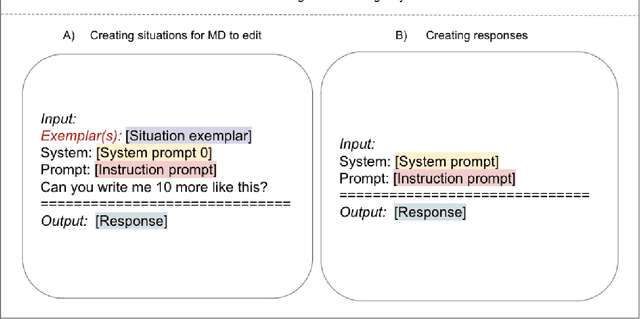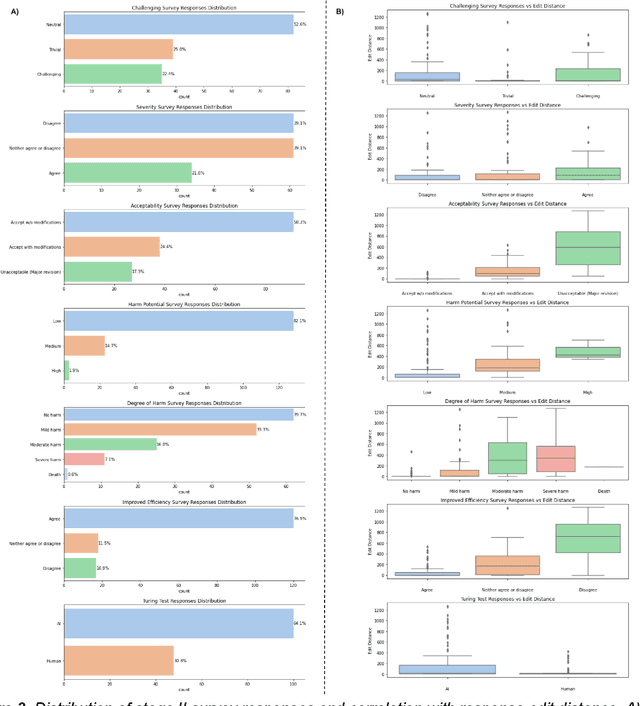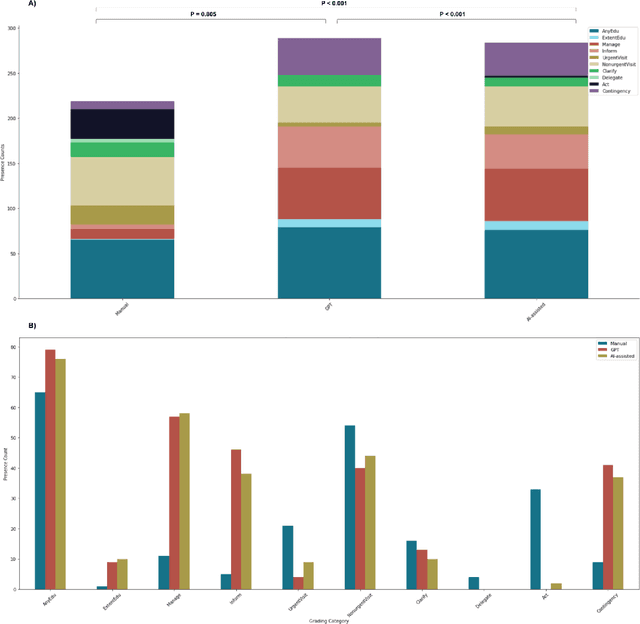Guergana K. Savova
Adapting Abstract Meaning Representation Parsing to the Clinical Narrative -- the SPRING THYME parser
May 15, 2024Abstract:This paper is dedicated to the design and evaluation of the first AMR parser tailored for clinical notes. Our objective was to facilitate the precise transformation of the clinical notes into structured AMR expressions, thereby enhancing the interpretability and usability of clinical text data at scale. Leveraging the colon cancer dataset from the Temporal Histories of Your Medical Events (THYME) corpus, we adapted a state-of-the-art AMR parser utilizing continuous training. Our approach incorporates data augmentation techniques to enhance the accuracy of AMR structure predictions. Notably, through this learning strategy, our parser achieved an impressive F1 score of 88% on the THYME corpus's colon cancer dataset. Moreover, our research delved into the efficacy of data required for domain adaptation within the realm of clinical notes, presenting domain adaptation data requirements for AMR parsing. This exploration not only underscores the parser's robust performance but also highlights its potential in facilitating a deeper understanding of clinical narratives through structured semantic representations.
The impact of using an AI chatbot to respond to patient messages
Oct 26, 2023



Abstract:Documentation burden is a major contributor to clinician burnout, which is rising nationally and is an urgent threat to our ability to care for patients. Artificial intelligence (AI) chatbots, such as ChatGPT, could reduce clinician burden by assisting with documentation. Although many hospitals are actively integrating such systems into electronic medical record systems, AI chatbots utility and impact on clinical decision-making have not been studied for this intended use. We are the first to examine the utility of large language models in assisting clinicians draft responses to patient questions. In our two-stage cross-sectional study, 6 oncologists responded to 100 realistic synthetic cancer patient scenarios and portal messages developed to reflect common medical situations, first manually, then with AI assistance. We find AI-assisted responses were longer, less readable, but provided acceptable drafts without edits 58% of time. AI assistance improved efficiency 77% of time, with low harm risk (82% safe). However, 7.7% unedited AI responses could severely harm. In 31% cases, physicians thought AI drafts were human-written. AI assistance led to more patient education recommendations, fewer clinical actions than manual responses. Results show promise for AI to improve clinician efficiency and patient care through assisting documentation, if used judiciously. Monitoring model outputs and human-AI interaction remains crucial for safe implementation.
Large Language Models to Identify Social Determinants of Health in Electronic Health Records
Aug 11, 2023Abstract:Social determinants of health (SDoH) have an important impact on patient outcomes but are incompletely collected from the electronic health records (EHR). This study researched the ability of large language models to extract SDoH from free text in EHRs, where they are most commonly documented, and explored the role of synthetic clinical text for improving the extraction of these scarcely documented, yet extremely valuable, clinical data. 800 patient notes were annotated for SDoH categories, and several transformer-based models were evaluated. The study also experimented with synthetic data generation and assessed for algorithmic bias. Our best-performing models were fine-tuned Flan-T5 XL (macro-F1 0.71) for any SDoH, and Flan-T5 XXL (macro-F1 0.70). The benefit of augmenting fine-tuning with synthetic data varied across model architecture and size, with smaller Flan-T5 models (base and large) showing the greatest improvements in performance (delta F1 +0.12 to +0.23). Model performance was similar on the in-hospital system dataset but worse on the MIMIC-III dataset. Our best-performing fine-tuned models outperformed zero- and few-shot performance of ChatGPT-family models for both tasks. These fine-tuned models were less likely than ChatGPT to change their prediction when race/ethnicity and gender descriptors were added to the text, suggesting less algorithmic bias (p<0.05). At the patient-level, our models identified 93.8% of patients with adverse SDoH, while ICD-10 codes captured 2.0%. Our method can effectively extracted SDoH information from clinic notes, performing better compare to GPT zero- and few-shot settings. These models could enhance real-world evidence on SDoH and aid in identifying patients needing social support.
Evaluation of ChatGPT Family of Models for Biomedical Reasoning and Classification
Apr 05, 2023



Abstract:Recent advances in large language models (LLMs) have shown impressive ability in biomedical question-answering, but have not been adequately investigated for more specific biomedical applications. This study investigates the performance of LLMs such as the ChatGPT family of models (GPT-3.5s, GPT-4) in biomedical tasks beyond question-answering. Because no patient data can be passed to the OpenAI API public interface, we evaluated model performance with over 10000 samples as proxies for two fundamental tasks in the clinical domain - classification and reasoning. The first task is classifying whether statements of clinical and policy recommendations in scientific literature constitute health advice. The second task is causal relation detection from the biomedical literature. We compared LLMs with simpler models, such as bag-of-words (BoW) with logistic regression, and fine-tuned BioBERT models. Despite the excitement around viral ChatGPT, we found that fine-tuning for two fundamental NLP tasks remained the best strategy. The simple BoW model performed on par with the most complex LLM prompting. Prompt engineering required significant investment.
Natural language processing to automatically extract the presence and severity of esophagitis in notes of patients undergoing radiotherapy
Mar 24, 2023Abstract:Radiotherapy (RT) toxicities can impair survival and quality-of-life, yet remain under-studied. Real-world evidence holds potential to improve our understanding of toxicities, but toxicity information is often only in clinical notes. We developed natural language processing (NLP) models to identify the presence and severity of esophagitis from notes of patients treated with thoracic RT. We fine-tuned statistical and pre-trained BERT-based models for three esophagitis classification tasks: Task 1) presence of esophagitis, Task 2) severe esophagitis or not, and Task 3) no esophagitis vs. grade 1 vs. grade 2-3. Transferability was tested on 345 notes from patients with esophageal cancer undergoing RT. Fine-tuning PubmedBERT yielded the best performance. The best macro-F1 was 0.92, 0.82, and 0.74 for Task 1, 2, and 3, respectively. Selecting the most informative note sections during fine-tuning improved macro-F1 by over 2% for all tasks. Silver-labeled data improved the macro-F1 by over 3% across all tasks. For the esophageal cancer notes, the best macro-F1 was 0.73, 0.74, and 0.65 for Task 1, 2, and 3, respectively, without additional fine-tuning. To our knowledge, this is the first effort to automatically extract esophagitis toxicity severity according to CTCAE guidelines from clinic notes. The promising performance provides proof-of-concept for NLP-based automated detailed toxicity monitoring in expanded domains.
 Add to Chrome
Add to Chrome Add to Firefox
Add to Firefox Add to Edge
Add to Edge